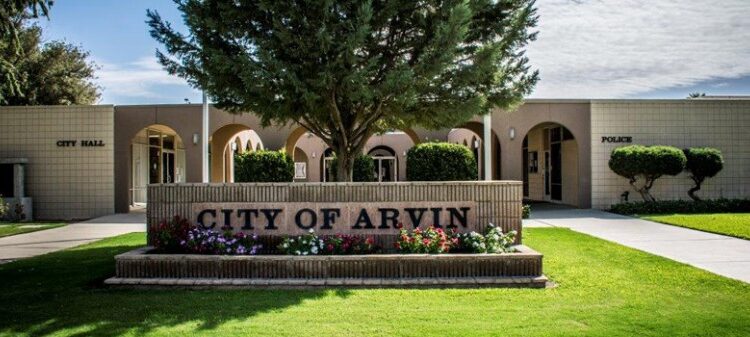
Although no zip code or city is immune from contracting the COVID-19 virus, rural communities in Kern County that are predominantly Hispanic or Latino are being hit the hardest, according to public health data.
McFarland, Lamont, Shafter and Arvin have the highest case rates in all of Kern County. About 5.47 percent of McFarland’s population, 5.33 percent of Lamont’s population, 5.3 percent of Shafter’s population, and 5.1 percent of Arvin’s population have contacted COVID-19, according to Wednesday’s data.
KERN SOL EN ESPANOL: Datos muestran que el COVID-19 Golpea Mas Fuerte a las comunidades rurales y Latinas de Kern
“Studies have shown that Hispanics are disproportionately impacted by COVID,” said Michelle Corson, the spokeswoman for the Kern County Public Health Department. “These areas have a higher case rate that some other areas within Kern County.”
It’s important to note these calculations include cases from the beginning of COVID-19 in March, “and don’t necessarily represent currently active COVID within the community,” said Corson.
Since March, 12,421 people have recovered from the virus, leaving 17,181 active cases in Kern County as of Wednesday; however, the predominately Hispanic and Latino communities still have the highest active case rate.
When factoring out the recovered cases (but not the presumed recovered cases), McFarland’s current active case rate is still the highest in the County, with 3.6 percent of the city’s population infected. In Wasco — a city that is 81 percent Hispanic — 3.25 percent of it’s population is infected with the virus, while 3.1 percent of Shafter’s population is infected with the virus, according to data provided on Wednesday on Kern County Public Health’s Interactive Map.
As of Wednesday, Latinos make up just over 38 percent of Kern County’s COVID-19 cases — or 11, 316 cases, while cases that have not been identified make up 48 percent. With the unknown cases removed, Latinos make up 73.5 percent of Kern’s cases that have been identified.
“Some reasons cited in these studies have been high proportion of essential workers who can’t work from home and multi-generational housing,” Corson said.
The number of people living in the same household in Kern’s rural areas is higher than other zip codes and cities in Kern County and California.
In Arvin, the average number of people living in one household is 4.28 people and 4.16 in Lamont, according to the U.S. Census Bureau. These numbers are a bit higher than the average in Kern County, which is 3.18 people and 2.96 people in California.
Local public health officials have said one of the most common ways people contract COVID-19 is from within the same household.
“Once it gets in the household, it’s common for multiple people in the household to get sick,” Kern Public Health’s Lead Epidemiologist Kim Hernandez said at Monday’s press conference.
Other than Latinos having larger families, Hernandez made note of other barriers this specific demographic is facing in regards to contracting COVID-19.
Lack of access to care has also played a role in why the Latino and Hispanic population is being disproportionately affected by COVID-19, according to Hernandez.
Just over 8 percent of California’s population and 9 percent of Kern County’s population under the age of 65 don’t have health insurance, according to the U.S. Census Bureau. However, the number of people without health insurance in Kern’s rural Latino communities is much higher.
A little more than 16 percent of people under the age of 65 living in Lamont and 11.6 percent of McFarland’s population do not have health insurance, according to the U.S. Census Bureau.
The number of people living in poverty in these rural cities is also much higher than California’s 12.8 percent and Kern’s 20.5 percent. Nearly 37 percent of McFarland’s population and 33 percent of Lamont’s population live in poverty, according to the Census Bureau.
To help address the disproportionate rates in Latino communities, Kern County leaders have started the Kern County Latino COVID-19 Task Force, co-founded by Kern County Hispanic Chamber of Commerce President and CEO Jay Tamsi, Attorneys H.A. Sala and David A. Torres, and Kern County Public Health Director Matt Constantine.
The goal of the task force, which is made up of 28 members from various industries throughout Kern County, is to flatten the curve among Kern’s Latino population and “save lives through outreach, education and awareness to find solutions to the disproportionate social and economic impact of COVID-19,” Tamsi said.
Although the task force is in its inception, Tamsi said the group plans to focus on initiatives including: Latinx and youth outreach; identifying farm worker challenges; working with Kern County Public Health to assist with outreach; creating a strategic campaign in English and Spanish through media outlets and social media platforms; canvasing rural areas in Kern; providing free COVID-19 Mobile Unit Testing; assisting businesses with employee outreach; and focusing on mental health, outreach and assistance to those affected by COVID-19, and identifying any systems of depression, fear and isolation.
The task force will focus their efforts in rural areas of Kern County, especially those of Latino descent and low-income areas, according to Tamsi.
“We want businesses to open again, children and teens to live freely, but we need everyone’s help to make this happen,” Tamsi said. “We ask everyone to be safe, follow the CDC guidelines and stay home when possible.”